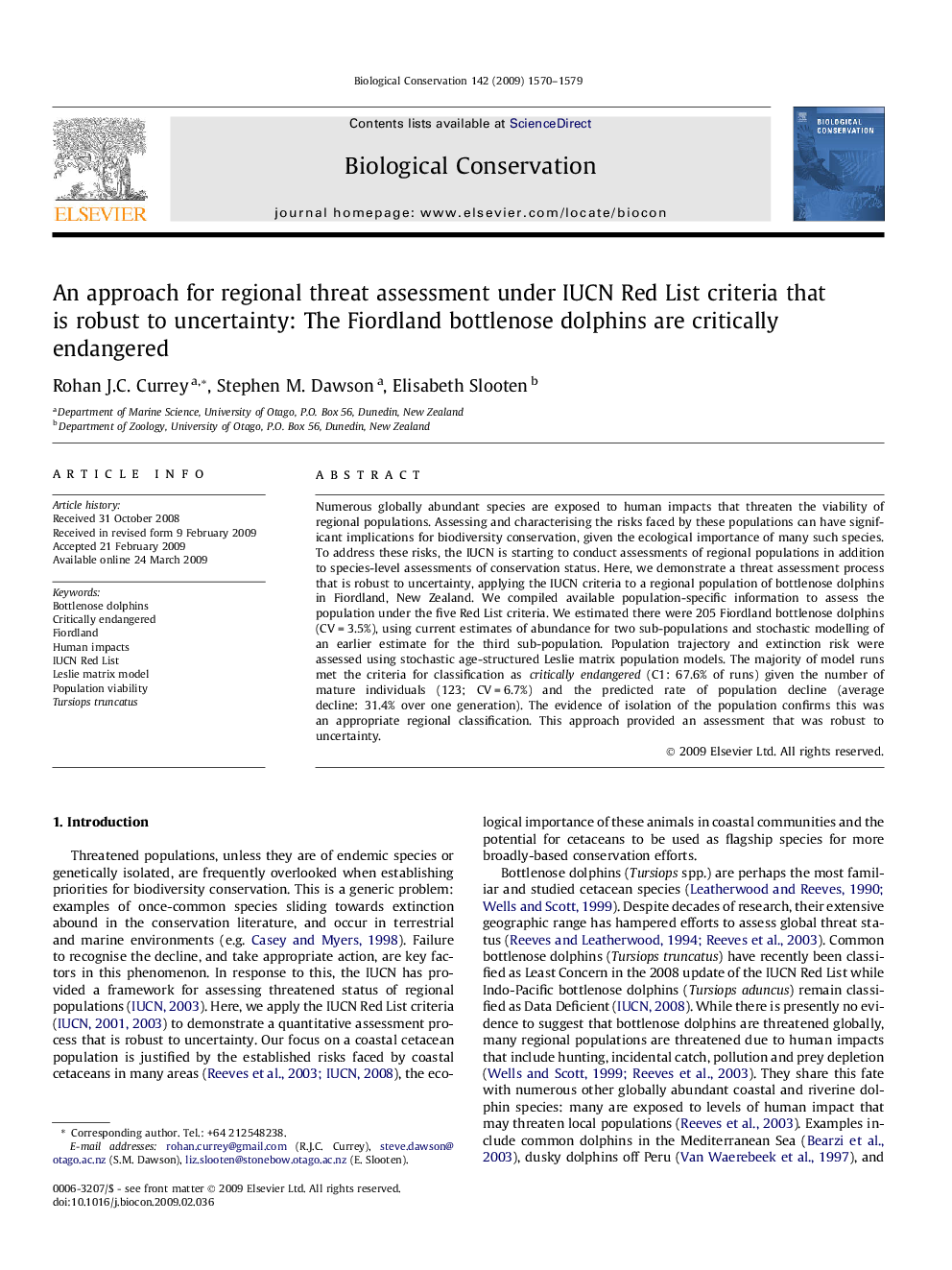| Article ID | Journal | Published Year | Pages | File Type |
|---|---|---|---|---|
| 4386240 | Biological Conservation | 2009 | 10 Pages |
Abstract
Numerous globally abundant species are exposed to human impacts that threaten the viability of regional populations. Assessing and characterising the risks faced by these populations can have significant implications for biodiversity conservation, given the ecological importance of many such species. To address these risks, the IUCN is starting to conduct assessments of regional populations in addition to species-level assessments of conservation status. Here, we demonstrate a threat assessment process that is robust to uncertainty, applying the IUCN criteria to a regional population of bottlenose dolphins in Fiordland, New Zealand. We compiled available population-specific information to assess the population under the five Red List criteria. We estimated there were 205 Fiordland bottlenose dolphins (CVÂ =Â 3.5%), using current estimates of abundance for two sub-populations and stochastic modelling of an earlier estimate for the third sub-population. Population trajectory and extinction risk were assessed using stochastic age-structured Leslie matrix population models. The majority of model runs met the criteria for classification as critically endangered (C1: 67.6% of runs) given the number of mature individuals (123; CVÂ =Â 6.7%) and the predicted rate of population decline (average decline: 31.4% over one generation). The evidence of isolation of the population confirms this was an appropriate regional classification. This approach provided an assessment that was robust to uncertainty.
Keywords
Related Topics
Life Sciences
Agricultural and Biological Sciences
Ecology, Evolution, Behavior and Systematics
Authors
Rohan J.C. Currey, Stephen M. Dawson, Elisabeth Slooten,
